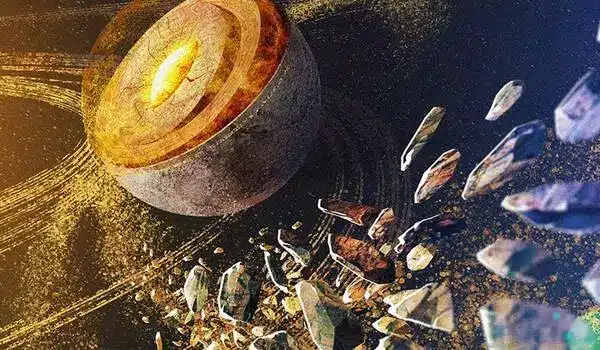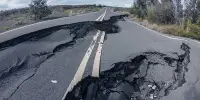Earth developed by an accretion process in the early solar system, where solid particles and rocky building pieces collided to form our globe. Planetesimal accretion is a term used to describe this phenomenon. According to a recent study, the planetesimals that accreted together to form Earth must have been made of dry, stony materials.
Larger and larger entities coalesced billions of years ago in the enormous disk of dust, gas, and rocky debris that orbited our newborn sun, eventually giving rise to the planets, moons, and asteroids we know today. Scientists are still attempting to comprehend the mechanisms that led to the formation of planets, including our own. Examining the magmas that flow up from deep below the planet’s interior is one way researchers might investigate how Earth began. These samples’ chemical signatures hold a record of the date and type of the components that came together to form Earth, similar to how fossils provide information about Earth’s biological past.
Now, a study from Caltech shows that the early Earth accreted from hot and dry materials, indicating that our planet’s water – the crucial component for the evolution of life – must have arrived late in the history of Earth’s formation.
Space exploration to the outer planets is really important because a water world is probably the best place to look for extraterrestrial life. However, the inner solar system should not be overlooked.
Francois Tissot
The study, involving an international team of researchers, was conducted in the laboratories of Francois Tissot, assistant professor of geochemistry and Heritage Medical Research Institute Investigator; and Yigang Zhang of the University of Chinese Academy of Sciences. A paper describing the research appears in the journal Science Advances. Caltech graduate student Weiyi Liu is the paper’s first author.
Though humans do not have the ability to travel into our planet’s interior, rocks deep within the earth can naturally find their way to the surface in the form of lavas. These lavas’ parental magmas can come from various depths within Earth, such as the upper mantle, which begins around 15 kilometers below the surface and extends for about 680 kilometers, or the lower mantle, which extends from a depth of 680 kilometers all the way to the core-mantle boundary, which is about 2,900 kilometers below our feet.
Like sampling different layers of a cake – the frosting, the filling, the sponge – scientists can study magmas originating from different depths to understand the different “flavors” of Earth’s layers: the chemicals found within and their ratios with respect to one another.

Because the formation of Earth was not instantaneous and instead involved materials accreting over time, samples from the lower mantle and upper mantle give different clues to what was happening over time during Earth’s accretion. In the new study, the team found that the early Earth was primarily composed of dry, rocky materials: chemical signatures from deep within the planet showed a lack of so-called volatiles, which are easily evaporated materials like water and iodine.
In contrast, upper mantle samples revealed three times the amount of volatiles found in the lower mantle. Based on these chemical ratios, Liu developed a model that demonstrated Earth evolved from hot, dry, stony elements, with a large influx of life-essential volatiles, including water, occurring only during the last 15% (or less) of Earth’s creation.
The research makes an important contribution to theories of planet formation, a topic that has seen multiple paradigm shifts in recent decades and is currently marked by active scientific dispute. In this context, the new study provides significant implications for the nature of the building blocks of other terrestrial planets, such as Mercury and Venus, which are thought to have formed from similarly dry materials.
“Space exploration to the outer planets is really important because a water world is probably the best place to look for extraterrestrial life,” Tissot said. “However, the inner solar system should not be overlooked. There hasn’t been a mission to Venus’s surface in about 40 years, and there has never been a mission to Mercury’s surface. We need to be able to study those worlds in order to learn more about how terrestrial planets like Earth arose.”














